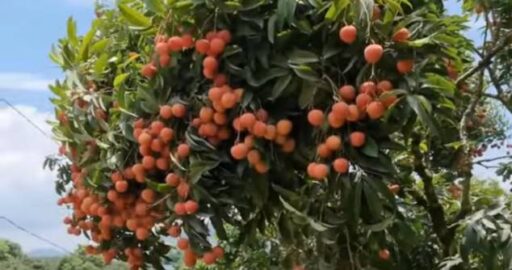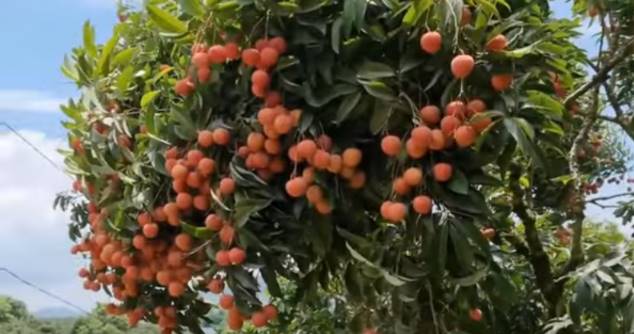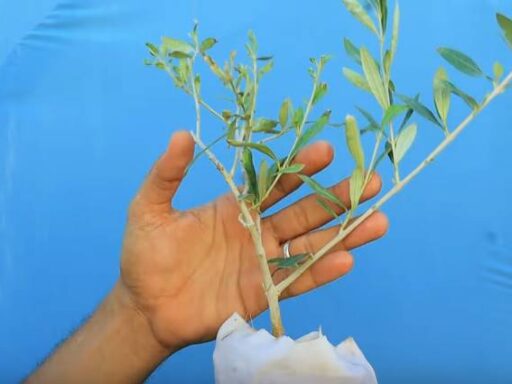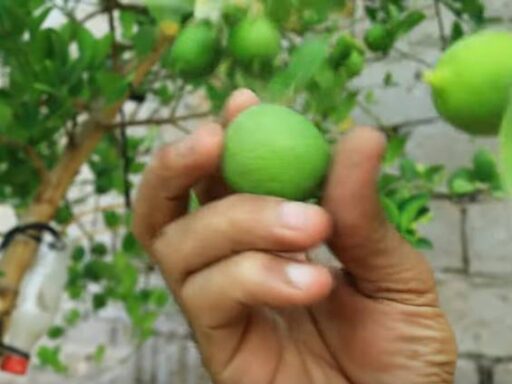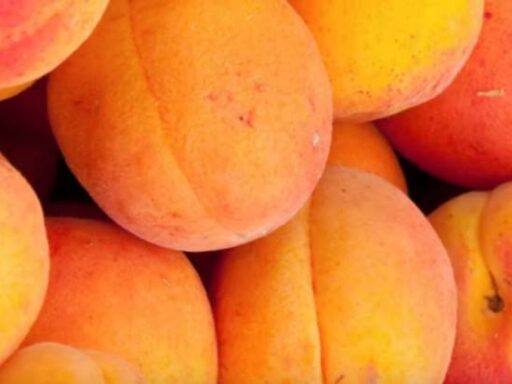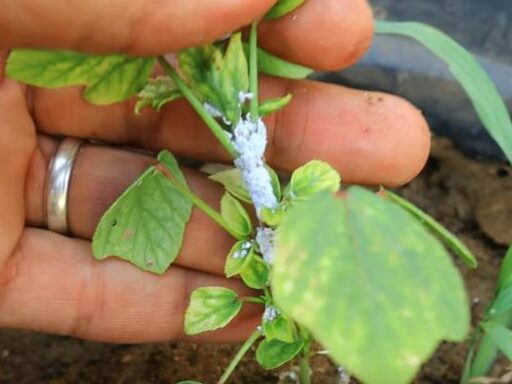The lychee tree is one of the most beautiful and exotic fruit trees you could ever encounter. It is not only known for its stunning appearance but also for its delicious fruit. Today, we’ll explore everything about this remarkable tree, from its cultivation to the best climate for its growth. Whether you’re considering planting one or simply curious about the process, this guide will offer you all the insights.
The Beauty of the Lychee Fruit
The lychee fruit is captivating in its appearance. When fully ripe, its color is a rich red, slightly darker when exposed to sunlight. The fruit is typically harvested through a method known as air layering, a popular technique that ensures successful propagation. The branch used for propagation can be obtained from an already established tree, making it possible to grow a healthy lychee tree with ease.
Lychee trees have begun to spread widely in Egypt and across the Arab world. They are planted in numerous places and have adapted well to various climates. However, certain steps must be followed to ensure successful cultivation.
Suitable Climate for Lychee Trees
Lychee trees thrive best in tropical or subtropical climates. In the initial stages of growth, it is recommended to keep the tree away from direct sunlight, especially in the first two to three months. During these early months, high temperatures can affect the fruit’s appearance and quality. As temperatures soar, sometimes exceeding 45°C, the tree may show signs of heat stress, such as leaf burn, but the tree will generally adapt over time. This resilience makes it an excellent choice for cultivation in most Arab countries, where temperatures usually don’t exceed 50°C.
Propagation and Growing Tips

The lychee tree is fast-growing, which is one of its unique features. Once propagated through air layering, the tree can bear fruit in as little as five to six months. Even in hot climates, the tree shows remarkable adaptability, with minimal impact on its leaves and overall health.
The lychee tree is evergreen, meaning its leaves remain vibrant throughout the year. The leaves are shiny and green, making the tree not only a fruitful addition to your garden but also an excellent ornamental plant.
Nutritional Benefits of Lychee Fruit
The lychee fruit is packed with essential nutrients. It is rich in vitamins, minerals, and antioxidants that are beneficial for health. The fruit’s outer skin may feel slightly rough to the touch, but once peeled, you are rewarded with a soft, juicy interior. The taste of lychee is a delightful combination of fig, kiwi, and grape, with a slight sweetness that makes it a favorite among tropical fruit lovers.
Inside the fruit, you will find seeds that are easy to cultivate. Simply remove them and plant them directly in soil. Lychee seeds are known to sprout quickly, typically within ten days. It’s best to plant the seeds when they are fresh, as this ensures a higher success rate in germination.
Cultivating Lychee from Seed
Growing a lychee tree from seed is straightforward. If you prefer, you can purchase seedlings from a nursery, but if you have access to the fruit, planting the seeds directly is an easy and rewarding process. For summer planting, you can accelerate germination by wrapping the seeds in a damp tissue and placing them in the fridge for a few days. In spring, you can plant the seeds directly into the soil, and within a short time, you’ll see growth.
The tree’s ability to withstand both high and low temperatures makes it versatile. It can thrive in a range of environments, and once established, it will continue to bear fruit and provide shade for many years to come.
Conclusion: A Tree Worth Growing
In summary, the lychee tree is a valuable addition to any garden, particularly in regions with warm climates. Its fast growth, beautiful evergreen leaves, and delicious fruit make it a popular choice among gardeners. Whether you grow it from seed or through air layering, the tree’s resilience and adaptability will reward you with bountiful harvests for years to come.

